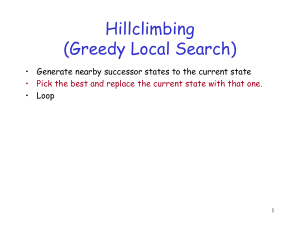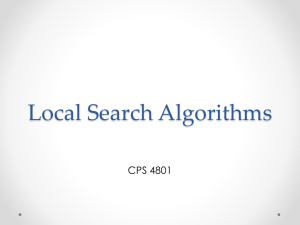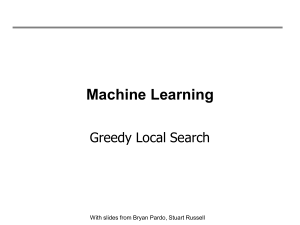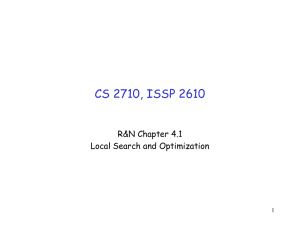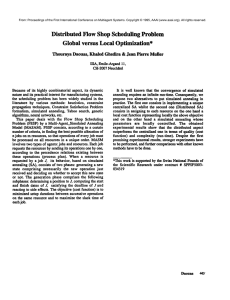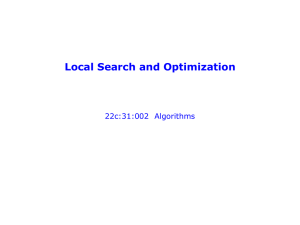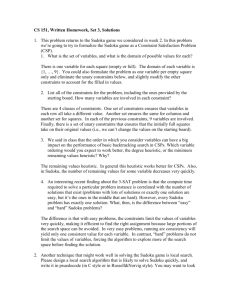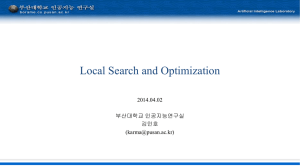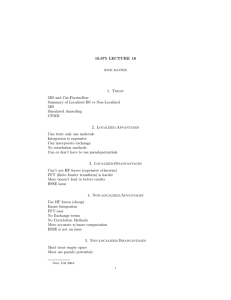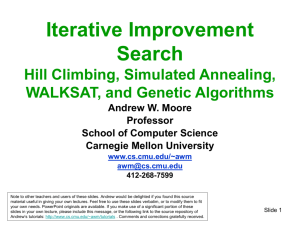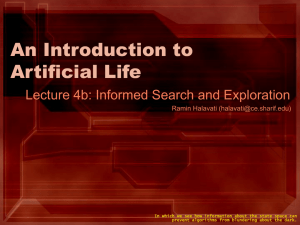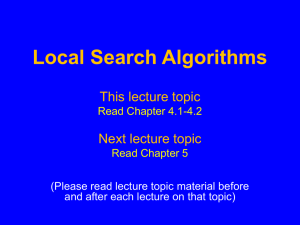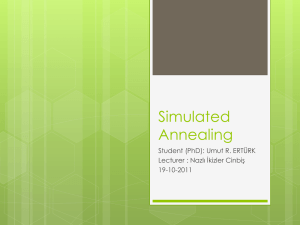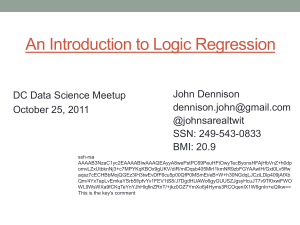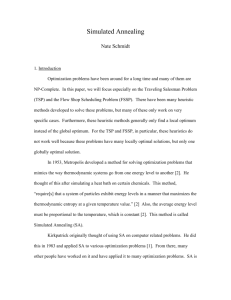slides on Chap. 4
advertisement
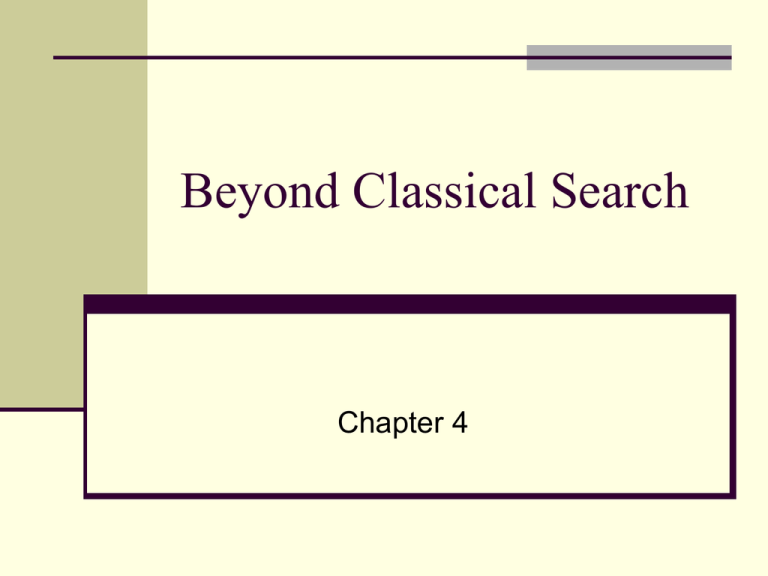
Beyond Classical Search Chapter 4 Outline Local Greedy Search – Hill Climbing Simulated Annealing Genetic Algorithms Local search algorithms In many optimization problems, the path to the goal is irrelevant; the goal state itself is the solution State space = set of "complete" configurations Find optimal configuration, e.g., TSP Find configuration satisfying constraints, e.g., n-queens In such cases, we can use local search algorithms keep a single "current" state, try to improve it Constance space Example: Traveling salesman problem Start with any complete tour, perform pair- wise exchange Variants of this approach get within 1% of optimal very quickly with thousands of cities Example: n-queens Put n queens on an n × n board with no two queens on the same row, column, or diagonal Hill-climbing search "Like climbing Everest in thick fog with amnesia" Hill-climbing search Problem: depending on initial state, can get stuck in local maxima Hill-climbing search: 8-queens problem h = number of pairs of queens that are attacking each other, either directly or indirectly h = 17 for the above state Hill-climbing search: 8-queens problem • A local minimum with h = 1 • Simulated annealing search Idea: escape local maxima by allowing some "bad" moves but gradually decrease their frequency Properties of simulated annealing search One can prove: If T decreases slowly enough, then simulated annealing search will find a global optimum with probability approaching 1 Widely used in VLSI layout, airline scheduling, etc Local beam search Keep track of k states rather than just one Start with k randomly generated states At each iteration, all the successors of all k states are generated If any one is a goal state, stop; else select the k best successors from the complete list and repeat. Genetic algorithms A successor state is generated by combining two parent states Start with k randomly generated states (population) A state is represented as a string over a finite alphabet (often a string of 0s and 1s) Evaluation function (fitness function). Higher values for better states. Produce the next generation of states by selection, crossover, and mutation Genetic algorithms Fitness function: number of non-attacking pairs of queens (min = 0, max = 8 × 7/2 = 28) 24/(24+23+20+11) = 31% 23/(24+23+20+11) = 29% etc Genetic algorithms Online search algorithm So far we talked about offline search Compute a sequence of actions before taking an action Online search interleaves action and computation An online search agent knows: 1. 2. 3. Actions(s) Step cost function c(s, a, s’) Goal_test(s) Online search algorithm Online search algorithm Online-DFS-agent Input: a percept s’ identifying the current state Output: an action a Maintain (persistent): Result: a table (s, a, s*) Untried: for each state s, list in Actions(s) not tried yet Unbacktracked: for each state s, list of backtracks not tried yet <s, a>: the previous state and action that leads to s’ Online search algorithm If Goal_test(s’) then return stop If s’ is a new state, then untried[s’] = Actions(s’) If s (the parent state) is not null, then result[s, a] = s’ Add s to front of unbacktracked[s’] If untried[s’] is empty then // dead-end If unbacktracked[s’] is empty then return stop Else a action b such that result[s’, b] = pop(unbacktracked[s’]) //backtracking else a pop(untried[s’]) //try another action at state s’ s s’ Return a Summary Local greedy search is efficient but not optimal - it can get stuck in a local optima Simulated annealing uses randomized search controlled by “temperature” Genetic Algorithm is a randomized search method patterned after natural evolution – “survival of the fittest”. Search methods are often used for solving optimization problems such as TSP 20
